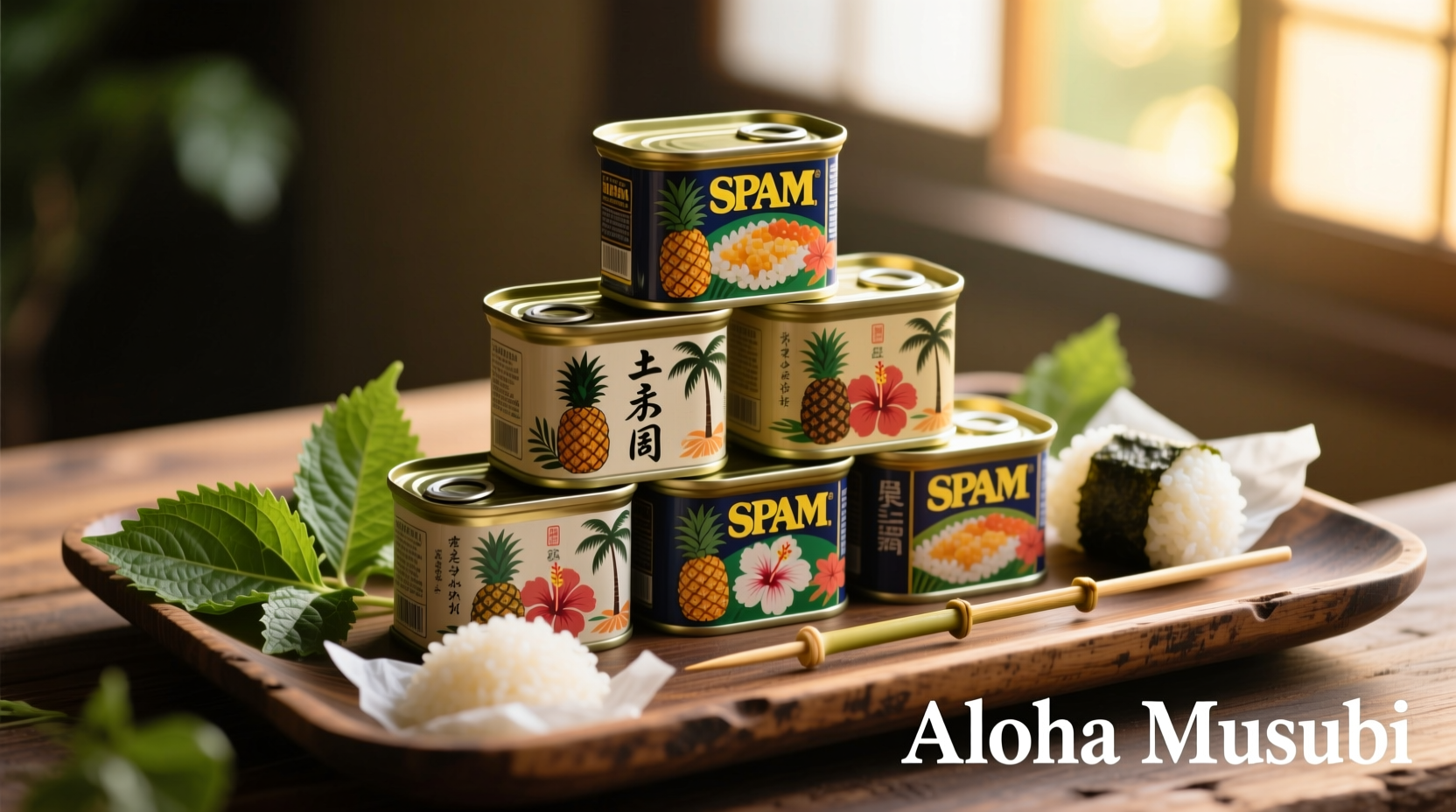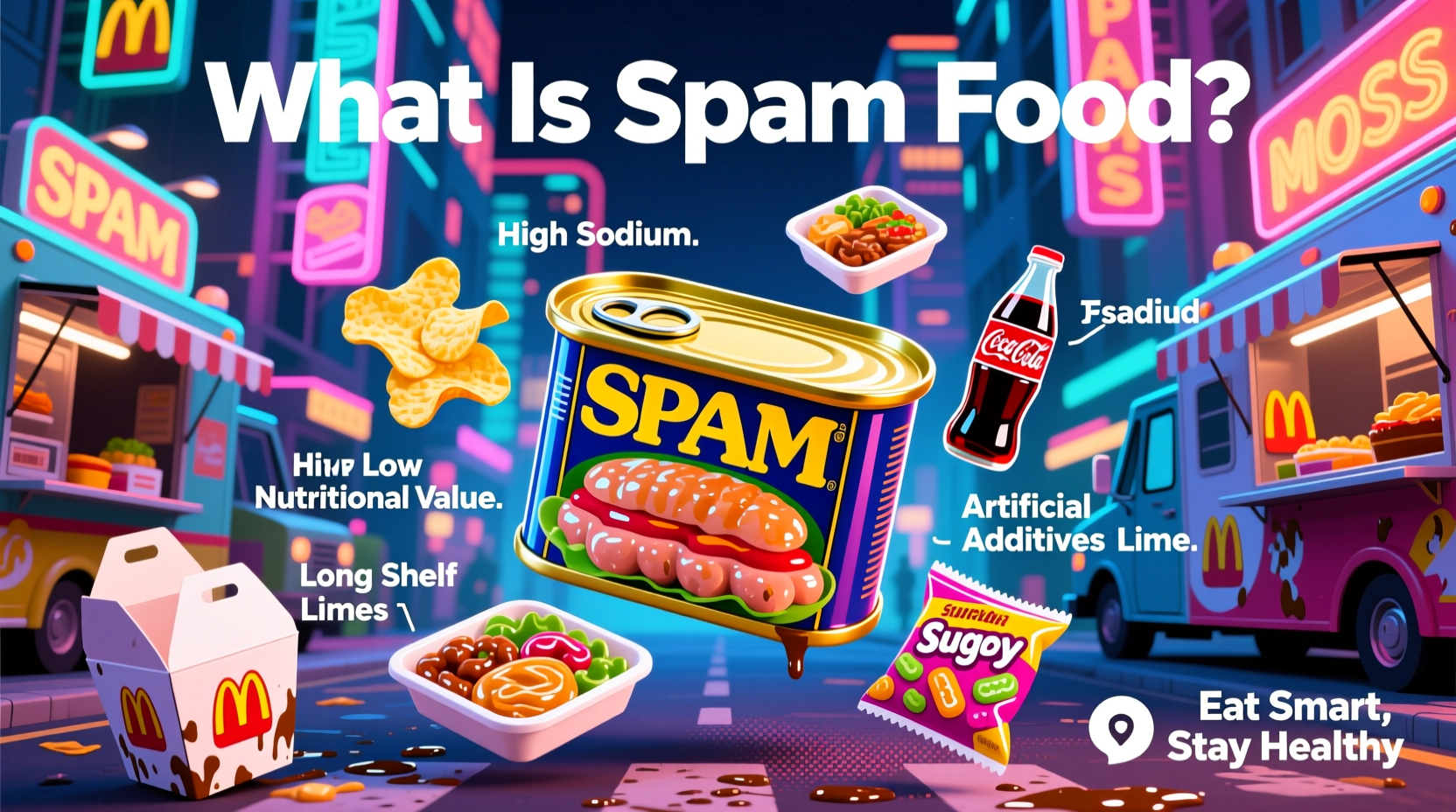Understanding Spam: More Than Just Canned Meat
When you ask what is spam food, you're exploring one of the most iconic processed meat products in modern culinary history. Despite common misconceptions, Spam isn't just "mystery meat"—it has a specific composition and rich cultural journey that spans nearly a century.
The Origins That Shaped a Global Staple
Spam was born during the Great Depression when Hormel Foods sought to create an affordable, shelf-stable meat product. The name itself came from a combination of "spiced" and "ham," though the final product contains both pork shoulder and ham. Its debut in 1937 couldn't have come at a better time—families needed economical protein sources, and Spam delivered at just $0.21 per can.
| Year | Key Development | Global Impact |
|---|---|---|
| 1937 | Original Spam introduced | Immediate popularity during Great Depression |
| 1940s | Mass production for WWII troops | Introduced to global markets through military distribution |
| 1950s | Civilian popularity surge | Became household staple in America and Pacific regions |
| 1980s-present | Global flavor adaptations | Specialty versions developed for Korean, Filipino markets |
What Exactly Is Spam Made Of?
The what is spam food question often stems from curiosity about its ingredients. According to Hormel's official specifications, authentic Spam contains:
- 75% pork shoulder and ham (with 9% fat content)
- 2.5% salt for preservation
- 2% water
- 1.5% sugar
- 0.3% sodium nitrite (a curing agent)
- 0.2% potato starch (in some varieties)
Unlike many processed meats, Spam contains no artificial preservatives beyond the sodium nitrite, which prevents botulism and maintains color. The distinctive texture comes from the emulsification process where finely ground meat is cooked in its own fat within the can.

Nutritional Profile: Separating Facts From Myths
When exploring what is spam food nutritionally, it's essential to examine verified data. A standard 56g serving (about 2 ounces) of classic Spam contains:
- 180 calories
- 15g fat (including 5g saturated fat)
- 780mg sodium (34% of daily value)
- 7g protein
- No carbohydrates or fiber
While higher in sodium than fresh meats, Spam provides complete protein and contains selenium, vitamin B12, and zinc. Nutritionists from the US Department of Agriculture note that moderate consumption fits within balanced diets, particularly when rinsed to reduce sodium content by up to 25%.
Cultural Significance Across the Globe
The why is spam popular in hawaii question reveals fascinating cultural adaptation. During WWII, American troops introduced Spam to Hawaii, where fresh meat was scarce. By the 1970s, Hawaii consumed seven million cans annually—more per capita than any other US state. Today, Spam musubi (rice, Spam, and seaweed) is Hawaii's unofficial state snack.
In South Korea, Spam became a luxury item after the Korean War when US military bases distributed it. Koreans now consider premium Spam gift sets appropriate for holidays and special occasions—a tradition documented by researchers at Korea University's Food Culture Institute.
Practical Cooking Applications
Understanding how to cook with spam unlocks its culinary potential. Unlike many canned meats, Spam benefits from high-heat cooking that creates a crispy exterior while maintaining moist interior. Popular preparation methods include:
- Pan-frying: Slice 1/4-inch thick, cook 2-3 minutes per side for golden crust
- Grilling: Marinate in brown sugar and soy sauce for Hawaiian-style teriyaki Spam
- Baking: Cube and incorporate into fried rice or pasta dishes
- Raw preparation: Thinly sliced for Spam musubi (common in Pacific cultures)
Addressing Common Misconceptions
Many is spam bad for you myths persist despite evidence to the contrary. Let's clarify:
- Myth: Spam contains mysterious "filler" ingredients
Fact: Hormel's ingredient list has remained consistent since 1937 with only minor formulation tweaks - Myth: Spam is high in unhealthy additives
Fact: It contains fewer ingredients than most deli meats and no artificial preservatives beyond sodium nitrite - Myth: Spam caused health problems among WWII troops
Fact: Historical records from the National Archives show Spam provided crucial nutrition during food shortages
Modern Variations and Global Adaptations
Today's spam food varieties reflect its global journey. While classic Spam remains popular, regional adaptations include:
- Spam Lite: Reduced sodium version (33% less salt)
- Spam with Bacon: Added smoked flavor profile
- Spam Teriyaki: Asian-inspired version popular in Hawaii and Korea
- Spam Classic: Traditional formulation preferred in Pacific markets
- Spam Less Sodium: Medical community-recommended option
Notably, South Korea has developed its own Spam-inspired products like lokkim (canned pork loaf), while the Philippines features Spam in traditional dishes like spamsilog (Spam with garlic rice and egg).
Practical Considerations for Modern Consumers
When incorporating Spam into your diet, consider these evidence-based recommendations from nutrition experts at Harvard T.H. Chan School of Public Health:
- Rinse slices under cold water to reduce sodium content by up to 25%
- Balanced portions: Limit to 2-3 ounces per serving (about 1/3 of a standard can)
- Pair with potassium-rich foods like bananas or spinach to counter sodium effects
- Store unopened cans in cool, dry places for up to 3 years
- Refrigerate opened portions and consume within 7-10 days
Conclusion: Spam's Enduring Culinary Legacy
Understanding what is spam food reveals far more than just a canned meat product—it represents culinary adaptation, historical necessity, and cultural integration. From its Depression-era origins to its status as a global comfort food, Spam has earned its place in pantries worldwide. Whether you're exploring Hawaiian cuisine, Korean street food, or simply seeking a versatile protein source, Spam offers a unique combination of convenience, shelf stability, and cultural significance that continues to resonate with cooks and eaters across generations.











 浙公网安备
33010002000092号
浙公网安备
33010002000092号 浙B2-20120091-4
浙B2-20120091-4